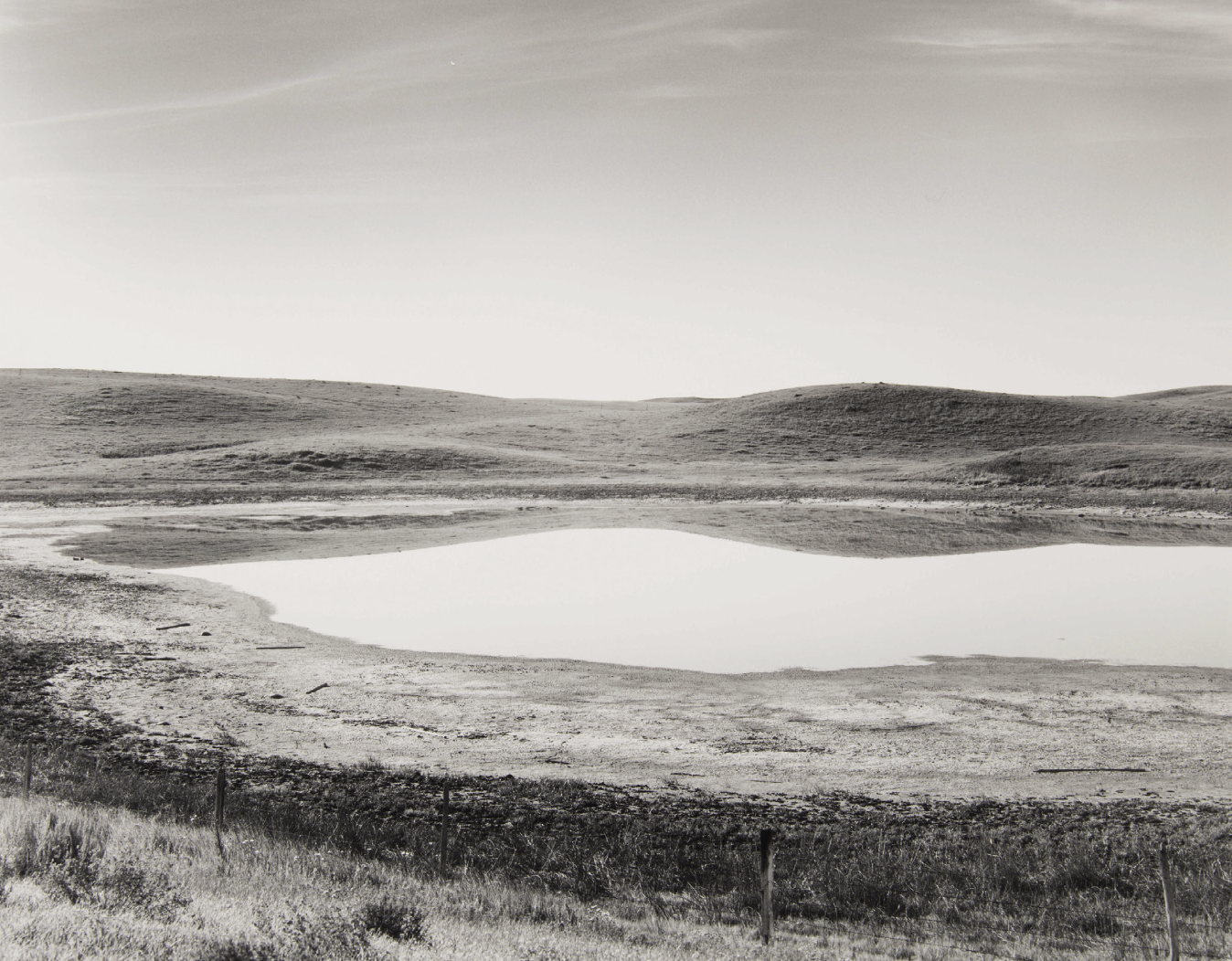Fredrick Benedict Scheel:
Prairie Road #2, Western North Dakota, 1980
black and white photograph
gift of the Frederick Benedict Scheel family
Resources:
“Scheel’s View: Tough Guys’s Photos Reveal and Softer Side,” Mark Strand, Fargo Forum

“Photography is my well-spring, my expedition, my refuge. Daily I look to it from creation and re-creation. My plea would be for you, when looking at photographs, to become a serious viewer. Search and probe. Look for strengths and weaknesses. Where are the rhythms in the composition? Where are the similarities and counter-points which build rhythms, or is the composition static? Many in their haste to see too much, see little. The seed has no time to sprout, much less to root.”
Photographer Fredrick Benedict Scheel (1921-2011) was born in Moorhead, Minnesota and lived his entire life within ten miles of his birthplace, except for seven years while attending college and serving in the Marines during World War II. The turning point in Scheel’s artistic path occurred in 1961 with his attendance in Ansel Adams’s Yosemite Photography Workshop; this experience established a serious turn in his Scheel’s work and began a long relationship with Adams. In subsequent years, Scheel embarked on many photography trips to California, working and teaching alongside Ansel Adams, Brett Weston, and other leading black-and-white photographers of the era.
The clarity of the landscape in Prairie Road #2, Western North Dakota shares common elements with the work of Adams in its modern and formal composition and sensitivity to light, yet asserts Scheel’s own intimate understanding of the landscapes of the plains region. “Fred found pattern and form—a sense of order—in the world, whether in human environments like cities or industrial buildings or in nature’s grand mountainous landscapes or in single flowers,” writes curator Colleen Sheehy.
This sense of order, contrast, and natural design was reflected as well in Scheel’s discipline as an artist. Despite his time-intensive work as a business leader and philanthropist, Scheel viewed photography as a practice that required daily effort and attention. “He was very regimented, very scheduled,” his son Steve D. Scheel told the Fargo Forum. “He worked in the darkroom every night...He never watched TV. He didn’t read novels...He spent 50, 60 hours a week at [his] business, and I’m sure he spent 30, 40 hours a week in his darkroom and traveling taking pictures.”
︎︎︎return to exhibition artists
︎︎︎further information at Plains Art Museum